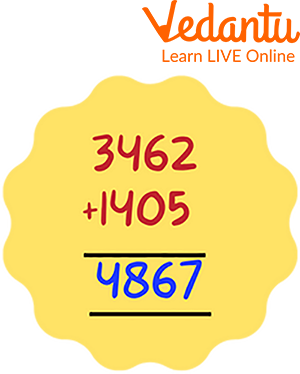If you happen to be viewing the article An Introduction to 4-Digit Addition? on the website Math Hello Kitty, there are a couple of convenient ways for you to navigate through the content. You have the option to simply scroll down and leisurely read each section at your own pace. Alternatively, if you’re in a rush or looking for specific information, you can swiftly click on the table of contents provided. This will instantly direct you to the exact section that contains the information you need most urgently.
Addition is one of the most prime and basic arithmetical operations which is used in Mathematics. It depicts a process of adding two or more quantities together to get the required total. The numbers being added to each other are called addends and the result obtained after addition is called the sum. Here, in this article, we will be discussing the topic of addition and sums related to addition without regrouping. So, let us begin with our learning.
Contents
What is Regrouping in Math?
Regrouping in Maths is defined as the process of making a group of tens while performing operations, basic addition, and subtraction. It comes into use when we work with double-digit numbers.
What is Addition without Regrouping?
Addition without regrouping is the process of performing the addition of two numbers corresponding to their place values without taking into consideration the rearrangement of numbers. It is carried out when the digits of the numbers add up to obtain the result that is nine or less. No carrying of tens or hundreds is allowed here. Regrouping and carrying have the same meanings when discussing the addition of integers.
4-Digit Addition without Regrouping
Steps to Solve 4-Digit Addition without Regrouping
When we tend to add the two numbers, we always start adding the numbers from the right-hand side and then move to the left-hand side. Steps followed to add without regrouping are given below:
-
Arrange the given numbers according to their place values in the column format.
-
The place values should fall in the same columns when you put the addends one on top of the other i.e. ones of the number in the one’s place, tens in the tens place, hundreds in the hundreds place, and thousands in the thousands place.
-
Separately add up each column, starting from the first position at the right.
-
Continue the above steps till the addition does not takes place at each position.
-
The totals of each column should appear below each column and the line.
Solved Examples
1. Add without regrouping: 8432 and 1234.
Ans: Steps to be followed to add without regrouping are given below:
-
Arrange the given numbers 8432 and 1234 according to their place values in column format.
-
The place values should fall in the same columns when you put the addends one on top of the other i.e. ones of the number in the one’s place, tens in the tens place, hundreds in the hundreds place, and thousands in the thousands place.
-
Separately add up each column, starting from the first position at right i.e. 2 and 4.
-
Continue the above steps till the addition does not takes place at all the four positions.
-
The totals of each column should appear below each column and below the line i.e. 9666.
Thus, the result of 4-digit addition without regrouping is 9666.

Solved Example of Addition without Regrouping
2. Add up the given quantities: 4472 and 5227.
Ans: Steps to be followed to add without regrouping are given below:
-
Arrange the given numbers 4472 and 5227 according to their place values in column format.
-
The place values should fall in the same columns when you put the addends one on top of the other i.e. ones of the number in the one’s place, tens in the tens place, hundreds in the hundreds place, and thousands in the thousands place.
-
Separately add up each column, starting from the first position at right i.e. 2 and 7.
-
Continue the above steps till the addition does not takes place at all four positions.
-
The totals of each column should appear below each column and below the line i.e. 9699.
Thus, the result of addition without regrouping is 9699.

Solved Example of 4-digit Addition without Regrouping
Practice Questions
Solve the following by adding without regrouping:
1. 4824 + 3145
Ans: 7969
2. 7454 + 3532
Ans: 10986
3. 3287 + 5711
Ans: 8998
4. 4374 + 2603
Ans: 6977
5. 1209 + 6480
Ans: 7689
6. 7465 + 2323
Ans: 9788
Summary
This article has covered all the details about the addition of two 4-digit numbers and some solved examples based on the addition without regrouping, using eye-catching pictures to draw students’ attention in understanding the new topic. Addition without regrouping is quite simpler because it does not deal with carrying problems. Some practice questions are being assigned to the students for a better understanding of the concepts.
Thank you so much for taking the time to read the article titled An Introduction to 4-Digit Addition written by Math Hello Kitty. Your support means a lot to us! We are glad that you found this article useful. If you have any feedback or thoughts, we would love to hear from you. Don’t forget to leave a comment and review on our website to help introduce it to others. Once again, we sincerely appreciate your support and thank you for being a valued reader!
Source: Math Hello Kitty
Categories: Math

